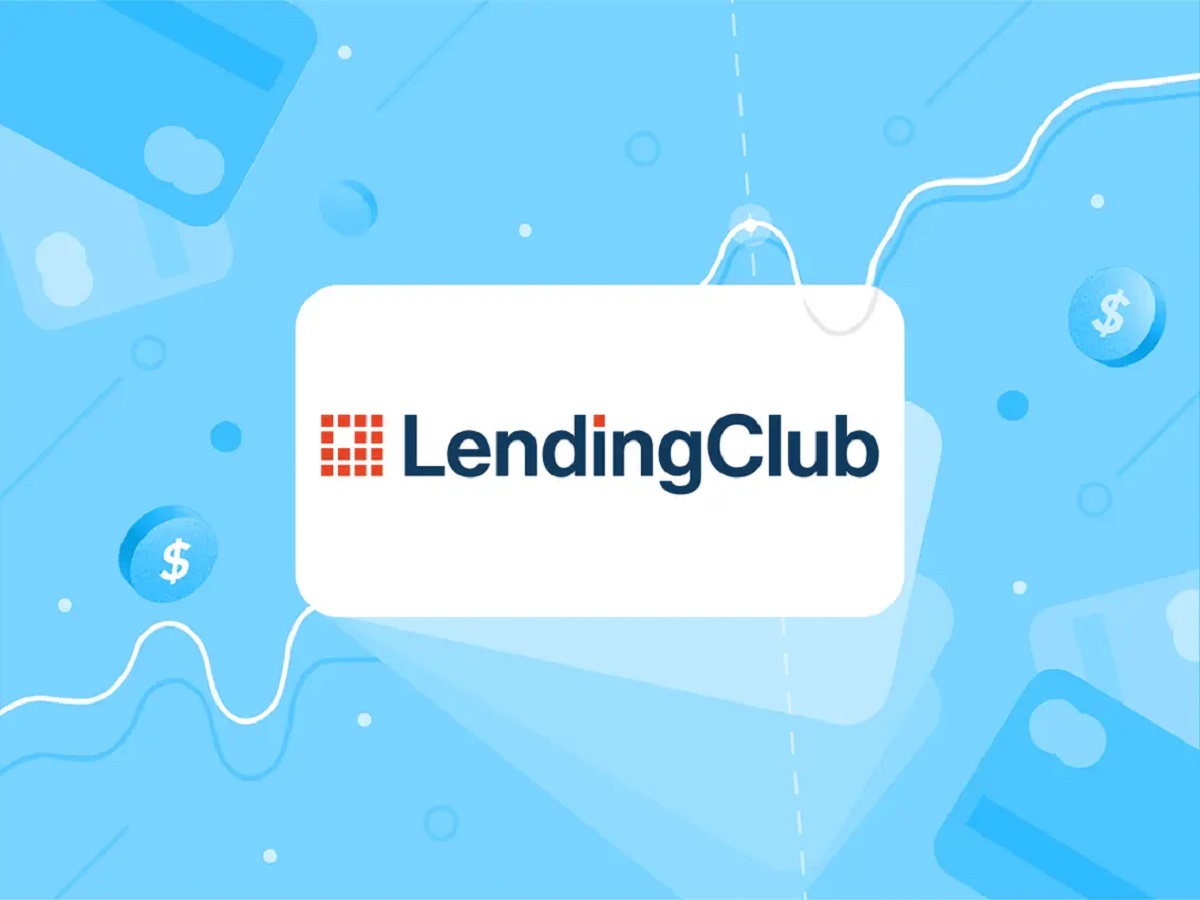Introduction
Welcome to the world of fintech banks! In the rapidly advancing digital age, traditional banking has evolved to incorporate technology, giving rise to a new breed of financial institutions known as fintech banks. These innovative banks leverage cutting-edge technologies to provide modern, convenient, and customer-centric financial services.
Unlike traditional banks, fintech banks operate primarily online, utilizing advanced digital platforms and mobile applications to deliver banking services to customers. Through seamless online experiences, they aim to simplify banking processes, enhance accessibility, and revolutionize the way we manage our finances.
With the growing popularity of fintech banks, it is essential to understand how they differ from traditional banks, the benefits they offer, and the regulatory landscape that governs their operations. This article will delve into all these aspects, giving you a comprehensive overview of the fascinating world of fintech banks.
So, whether you’re a tech-savvy individual exploring new banking options or a curious professional wanting to stay updated on the latest trends in the financial sector, this article is the perfect guide to help you navigate the world of fintech banks.
Let’s dive in and discover how these digital-savvy financial institutions are reshaping the way we interact with money and banking services.
Definition of Fintech Banks
Fintech banks, also known as digital banks or neobanks, are financial institutions that merge technology with traditional banking services to offer a seamless and modern banking experience. These banks operate primarily in the digital space, without any physical branches, and rely heavily on innovative technology to deliver their services.
Unlike traditional banks, which have physical branches and a brick-and-mortar presence, fintech banks exist entirely online. They rely on user-friendly mobile applications and web platforms to provide a range of banking services, including opening accounts, managing transactions, transferring funds, and accessing customer support.
Fintech banks leverage cutting-edge technologies such as artificial intelligence, machine learning, big data analytics, and blockchain to streamline banking processes, enhance security, and personalize customer experiences. By eliminating the need for physical infrastructure, fintech banks can operate with lower overhead costs, which allows them to offer competitive interest rates, lower fees, and more flexible services compared to traditional banks.
Moreover, fintech banks often collaborate with established banking partners or obtain banking licenses to ensure regulatory compliance and provide customers with the same level of security and protection that traditional banks offer. This means that customer deposits with fintech banks are typically insured up to a certain limit, providing a level of confidence and peace of mind.
Fintech banks have gained traction worldwide, attracting a diverse customer base that values convenience, digital innovation, and tailored financial solutions. Whether it’s an individual looking for a hassle-free banking experience or a small business in need of flexible banking services, fintech banks provide accessible and customizable options to meet a wide array of financial needs.
In the next section, we will explore how fintech banks differ from their traditional counterparts and the advantages they offer in today’s fast-paced digital landscape.
How Fintech Banks Differ from Traditional Banks
Fintech banks have disrupted the traditional banking industry by introducing innovative digital solutions and transforming the way people interact with financial services. Here are some key ways in which fintech banks differ from traditional banks:
- Physical Presence: Unlike traditional banks that have physical branches, fintech banks operate solely in the digital realm. This means that customers can access their accounts and perform banking transactions anytime, anywhere, through mobile apps or web platforms.
- Cost Structure: Fintech banks have a leaner cost structure compared to traditional banks, as they do not have the overhead costs associated with maintaining physical branches. This allows them to offer competitive interest rates, lower fees, and potentially higher returns on savings accounts and investments.
- User-Friendly Experience: Fintech banks prioritize user experience and design their platforms with simplicity and straightforwardness in mind. Their intuitive mobile apps, easy-to-navigate websites, and customer-friendly interfaces make banking more accessible and convenient for users.
- Personalization and AI Technology: Fintech banks leverage artificial intelligence and big data analytics to gain insights into customers’ financial behaviors and preferences. This enables them to offer personalized recommendations, targeted financial products, and more tailored customer experiences.
- Agility and Innovation: Fintech banks are known for their agility and ability to quickly adapt to changing customer needs and market trends. They can introduce new features, launch innovative products, and update their digital platforms seamlessly, providing customers with the latest advancements in banking technology.
- Collaborations and Partnerships: Fintech banks often collaborate with technology companies, payment processors, or traditional banks to enhance their offerings and expand their reach. These partnerships allow them to leverage the expertise and resources of established institutions while maintaining their focus on technological innovation.
While traditional banks still have their place in the financial industry, fintech banks offer a fresh and modern alternative that resonates with digitally savvy individuals and businesses seeking convenience, flexibility, and personalized financial solutions.
Next, let’s explore some examples of successful fintech banks that are transforming the way we bank.
Examples of Fintech Banks
The rise of fintech in recent years has given birth to numerous innovative digital banks that are revolutionizing the banking industry. Here are some notable examples of successful fintech banks:
- Chime: Chime is a popular fintech bank that offers a mobile banking platform focused on providing users with fee-free banking services and a user-friendly experience. With features like early direct deposit, automatic savings, and round-up savings, Chime aims to help customers save money effortlessly while avoiding unnecessary fees.
- Revolut: Revolut is a global fintech bank that provides customers with a range of financial services, including currency exchange, budgeting tools, and investment options. With its multi-currency accounts and competitive exchange rates, Revolut is particularly popular among frequent travelers and digital nomads.
- N26: N26 is a European digital bank that offers a range of banking features via its mobile app. It provides free withdrawals worldwide, real-time notifications for transactions, and personalized insights into spending habits. N26 also offers premium membership with additional features like travel insurance and partner offers.
- Monzo: Monzo is a UK-based fintech bank that has gained a significant user base with its user-friendly interface and innovative features like spending categorization, instant notifications, and bill splitting. Monzo also offers a business banking service, providing small businesses with a seamless and intuitive banking experience.
- Sofi: Sofi is a US-based fintech bank that focuses on providing personalized financial products and services to its customers. Sofi offers student loan refinancing, personal loans, mortgage solutions, and investment options, all accessible through its user-friendly mobile app.
These are just a few examples of the many fintech banks that have entered the market with compelling offerings and disruptive technology. Each of these banks aims to cater to the specific needs and preferences of their target customers, whether it’s budget-conscious individuals, frequent travelers, small business owners, or those seeking innovative financial solutions.
Through their digital-first approach, these fintech banks have gained a loyal customer base that appreciates their convenience, competitive offerings, and commitment to delivering a seamless and personalized banking experience.
Next, let’s explore the benefits that fintech banks bring to the table and how they are transforming the banking landscape.
Benefits of Fintech Banks
Fintech banks have emerged as disruptors in the traditional banking industry, offering a range of benefits that cater to the needs and preferences of modern-day customers. Here are some of the key advantages of choosing a fintech bank:
- Convenience: Fintech banks provide unparalleled convenience by allowing customers to access their accounts and perform transactions anytime and anywhere, through user-friendly mobile apps or web platforms. This eliminates the need to visit physical branches or adhere to strict banking hours, enabling users to manage their finances at their convenience.
- Cost-Effectiveness: Fintech banks often have lower overhead costs compared to traditional banks, which enables them to offer competitive interest rates, reduced fees, and potentially higher returns on savings and investment products. This cost-effectiveness translates into greater savings and financial benefits for customers.
- Personalization: Leveraging advanced technologies like artificial intelligence and big data analytics, fintech banks gather insights into customers’ financial behaviors and preferences. This allows them to offer personalized recommendations, tailored financial products, and targeted offers that align with each individual’s unique goals and needs.
- Enhanced Security: Fintech banks prioritize security by implementing advanced encryption techniques, multi-factor authentication, and robust fraud prevention measures. Moreover, since customer transactions are conducted online, there is a reduced risk of physical theft or loss of sensitive information, enhancing the overall security of financial transactions.
- Financial Management Tools: Fintech banks often provide comprehensive financial management tools and features that empower users to better understand their spending habits, manage budgets, and track expenses. These tools offer valuable insights and promote financial literacy, helping users make informed financial decisions.
- Fast and Seamless Transactions: With fintech banks, transactions are typically processed in real-time, enabling swift and seamless transfer of funds between accounts and across borders. This eliminates the delays associated with traditional banking systems and provides users with immediate access to their funds when needed.
By harnessing technology and adopting a customer-centric approach, fintech banks transform the way individuals and businesses engage with banking services, offering greater flexibility, convenience, and customization. As a result, fintech banks have gained a significant following and continue to shape the future of the banking industry.
However, fintech banks also face certain challenges that can impact their operations and growth. Let’s explore some of these challenges in the next section.
Challenges Faced by Fintech Banks
While fintech banks bring numerous benefits to the table, they also face certain challenges unique to their industry. Understanding these challenges is crucial to gaining insight into the evolving landscape of digital banking. Here are some key challenges faced by fintech banks:
- Regulatory Compliance: Fintech banks must navigate a complex regulatory landscape to ensure compliance with financial regulations and consumer protection laws. As they operate across jurisdictions, they need to stay updated with changing regulations, obtain necessary licenses, and establish strong risk management frameworks to meet regulatory requirements.
- Cybersecurity Risks: Being digital-first institutions, fintech banks are susceptible to cybersecurity risks such as data breaches, hacking attempts, and identity theft. Protecting customer data and maintaining robust cybersecurity measures are paramount to ensure trust and safeguard against potential threats.
- Building Customer Trust: Establishing trust is crucial for fintech banks to attract and retain customers. As relatively new players in the financial industry, they face the challenge of convincing customers to switch from traditional banking and entrust their finances to a digital platform. Building a strong reputation and maintaining transparent communication are key to gaining and retaining customer trust.
- Partnerships and Collaborations: Fintech banks often collaborate with other financial institutions, technology providers, or payment processors to expand their product offerings and reach a broader customer base. However, building successful partnerships can be challenging due to varying business models, compatibility issues, and differing priorities among potential partners.
- Customer Education: Educating customers about the benefits and features of fintech banking is crucial for adoption and usage. Fintech banks need to invest in customer education initiatives to help users understand how to navigate their platforms, utilize the available tools, and make the most of the digital banking experience.
- Competitive Landscape: Fintech banks operate in a highly competitive market with both traditional banks and other fintech players vying for customers. Staying ahead of the competition requires continuous innovation, differentiation in product offerings, and delivering exceptional customer experiences.
While these challenges present hurdles for fintech banks, they also provide opportunities for growth, evolution, and industry collaboration. Overcoming these challenges helps fintech banks strengthen their position in the financial ecosystem and pave the way for continued innovation and advancement.
Now, let’s explore the regulatory framework that governs the operations of fintech banks.
Regulatory Framework for Fintech Banks
Fintech banks operate within a regulatory framework that governs their operations and ensures consumer protection. Regulatory bodies across different jurisdictions have recognized the transformative potential of fintech and have introduced regulations to foster innovation while maintaining stability in the financial system. Here are some key aspects of the regulatory framework for fintech banks:
Licensing and Supervision: Fintech banks are required to obtain relevant licenses and approvals to operate legally. Depending on the jurisdiction, these licenses may vary, ranging from specialized fintech charters to becoming subsidiaries of traditional banks. Regulatory bodies closely supervise fintech banks to ensure compliance with regulations, monitor risk management practices, and protect the interests of consumers.
Anti-Money Laundering (AML) and Know Your Customer (KYC) Compliance: Fintech banks are subject to stringent AML and KYC regulations to prevent money laundering, terrorist financing, and other illicit activities. They are required to implement robust customer identification and verification processes, conduct ongoing due diligence, and report suspicious transactions as mandated by regulatory guidelines.
Data Protection and Privacy: As custodians of sensitive customer data, fintech banks must adhere to data protection and privacy regulations. They are required to implement stringent security measures to safeguard customer information, obtain user consent for data processing, and comply with data breach notification requirements to ensure customer trust and confidentiality.
Consumer Protection: Regulatory frameworks aim to protect consumers by establishing rules and standards for financial products and services. Fintech banks must provide clear and transparent information about product features, fees, and terms, and address customer complaints and dispute resolution in a fair and timely manner. Regulations also encourage financial literacy initiatives to empower consumers in making informed financial decisions.
Cross-Border Regulations: Fintech banks that operate across borders must navigate cross-border regulatory frameworks. These regulations may include licensing requirements, currency controls, data transfer limitations, and compliance with different jurisdictions’ laws. Compliance with cross-border regulations is crucial to ensure legal operations and avoid regulatory penalties.
It is important for fintech banks to stay updated with regulatory changes and engage with regulatory authorities to ensure compliance. Regulatory sandboxes, pilot programs, and collaboration between regulators and fintech innovators play a significant role in fostering innovation while maintaining regulatory oversight.
As fintech continues to reshape the financial landscape, regulators strive to strike a balance between encouraging innovation and protecting consumers’ interests. The regulatory framework for fintech banks is designed to foster a robust and secure environment that promotes digital innovation and benefits all stakeholders in the financial ecosystem.
Now let’s summarize our exploration of fintech banks.
Conclusion
Fintech banks have emerged as disruptive forces in the banking industry, leveraging technology to revolutionize how individuals and businesses manage their finances. These digital-first institutions offer a range of benefits, including convenience, cost-effectiveness, personalized financial solutions, enhanced security, and advanced financial management tools.
While fintech banks face challenges such as regulatory compliance, cybersecurity risks, and building customer trust, they continue to evolve and innovate to overcome these obstacles. Collaboration with established financial institutions, partnerships with technology providers, and continuous customer education are key strategies employed by fintech banks to drive growth and stay ahead in a competitive landscape.
The regulatory framework governing fintech banks ensures consumer protection, oversees compliance, and nurtures responsible innovation. Licensing requirements, AML and KYC compliance, data protection and privacy regulations, and consumer protection guidelines contribute to a secure and transparent fintech environment.
As fintech banks gain popularity and reshape the financial industry, collaboration between regulators, fintech innovators, and traditional banks is essential in driving further innovation, ensuring regulatory compliance, and maintaining trust in the rapidly evolving digital banking ecosystem.
In conclusion, fintech banks have revolutionized banking by providing efficient, personalized, and convenient financial services through digital platforms. As technology continues to advance and customer expectations evolve, fintech banks are well-positioned to lead the way in shaping the future of banking.

























